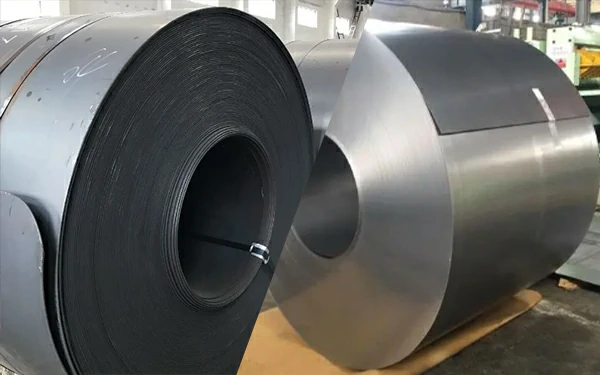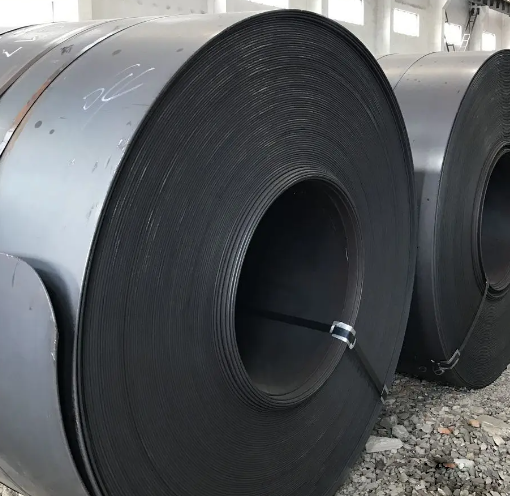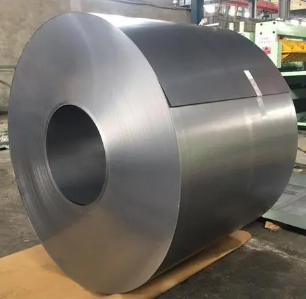Temperature difference of over 1,000 degrees: Hot rolling and cold rolling
Hot rolling and cold rolling are the two core processes for shaping steel. The fundamental difference between them is not simply "high temperature" versus "normal temperature", but whether they exceed the recrystallization temperature of steel (which ranges from 450℃ to 600℃). This temperature boundary directly determines the internal structure, mechanical properties, and application scenarios of the steel - hot rolling focuses on "rough shaping" and serves as the core for supporting the majority of basic steel production; cold rolling aims for "precision processing" and concentrates on manufacturing steel with high precision and surface quality. Together, they form the "first rough then fine" industrial chain for steel processing.
Aug 28,2025

Hot rolling and cold rolling are the two core processes for shaping steel. The fundamental difference between them is not simply "high temperature" versus "normal temperature", but whether they exceed the recrystallization temperature of steel (which ranges from 450℃ to 600℃). This temperature boundary directly determines the internal structure, mechanical properties, and application scenarios of the steel - hot rolling focuses on "rough shaping" and serves as the core for supporting the majority of basic steel production; cold rolling aims for "precision processing" and concentrates on manufacturing steel with high precision and surface quality. Together, they form the "first rough then fine" industrial chain for steel processing.
I. Hot Rolling: "Efficient Rough Shaping" Above the Recrystallization Temperature

1. Process Essence and Flow
Steel ingots or billets have poor plasticity and are difficult to deform at room temperature. They need to be heated to 1100℃ to 1250℃ (far above the recrystallization temperature) to enhance plasticity, and then formed by rolling. This process is called hot rolling. The termination temperature of hot rolling is usually controlled at 800℃ to 900℃. The formed steel does not require additional heat treatment and is naturally cooled in the air. The cooling process itself is equivalent to a "normalizing treatment", which can initially optimize the crystal structure of the steel.
2. Core Characteristics Analysis
The most notable feature of hot-rolled steel is that a layer of iron oxide scale (mainly composed of Fe₂O₃ and Fe₃O₄) forms on the surface:
This layer of iron oxide scale can give steel a certain degree of corrosion resistance, allowing it to be stored outdoors directly and reducing storage costs;
However, it also has obvious shortcomings - the surface is rough and the size fluctuates greatly (tolerance is usually above ±0.5mm), unable to meet the high requirements for surface smoothness or dimensional accuracy.
Therefore, hot-rolled steel is mostly used as a "basic raw material": if high-precision steel (such as cold-rolled sheet) needs to be produced, it must be further processed from the hot-rolled material.
3. Advantages and Disadvantages and Application Scenarios
Advantages: Suitable for large-scale and heavy-demand scenarios
High forming efficiency and compatibility: At high temperatures, steel has excellent plasticity, not only forming quickly and with high output, but also able to roll H-beams, I-beams, thick steel plates and other large-section profiles, with a rich form of sections, meeting the requirements of heavy-load scenarios such as building structures, mechanical bases, and pipelines;
Better internal structure: High-temperature rolling can break the "casting structure" of the steel ingot, eliminating internal coarse grains, bubbles, cracks, and porosity, making the steel structure denser, and significantly improving mechanical properties such as tensile strength and toughness along the rolling direction;
Lower production cost: No need for complex subsequent processes such as acid washing and annealing, the process is simplified, suitable for large-scale industrial production, and has obvious cost advantages.
Disadvantages: Limited precision and local performance
Risk of layering needs to be guarded against: During rolling, non-metallic inclusions (such as sulfides and oxides) in the steel will be pressed into thin sheets, forming a "layering phenomenon", resulting in a significant drop in tensile strength along the thickness direction of the steel, and possible "interlayer tearing" (the local strain during weld shrinkage can reach several times the yield strain, much greater than the strain generated by the load);
Residual stress affects stability: Due to the unevenness of "surface fast cooling and core slow cooling", residual stress (self-balancing internal stress without external force) will be generated inside the steel, and the larger the cross-sectional size of the profile, the more obvious the residual stress, which may affect the deformation control, stability and fatigue resistance of the component;
Surface and dimensional accuracy is low: The iron oxide scale causes the surface to be rough, unable to be used for appearance parts; the size tolerance is large, only suitable for structural components with low precision requirements, and difficult to meet the needs of precise manufacturing.
II. Cold Rolling: "Precise Fine Processing" Below the Recrystallization Temperature

1. Process Nature and Flow
Cold rolling uses "hot-rolled steel coils" as raw materials and is carried out throughout in a normal temperature environment (below the recrystallization temperature):
The first step involves removing the oxide scale on the surface of the hot-rolled steel coil through "pickling" (to prevent the oxide scale from being pressed into the steel surface during rolling and thus affecting the quality);
Subsequently, the pressure applied by the rolling machine causes deformation, resulting in the final product being a "rolled hard coil".
It should be noted that during the cold rolling process, the friction between the rolls and the steel generates a small amount of heat (the steel temperature rises to 50℃ - 100℃), but it is far from reaching the recrystallization temperature, so it still falls under the category of "cold rolling". If the plasticity of the rolled hard coil needs to be improved (such as for automotive stamping parts), additional "annealing treatment" (heating to 200℃ - 300℃ to eliminate "cold work hardening") is required.
2. Core Feature Analysis
The core advantages of cold-rolled steel lie in "precision" and "surface quality":
After pickling, the surface has no iron oxide scale, and the surface finish is high (no roughness when touched with hands), which can be directly used as the base material for appearance components;
The dimensional accuracy is extremely high, with a tolerance of ±0.02mm, far exceeding that of hot-rolled materials;
The thickness range is more flexible, with the thinnest hot-rolled steel strip being approximately 1.0mm, while cold-rolled can be rolled down to 0.1mm (even thinner steel foils) to meet the requirements of precision components.
However, continuous cold deformation can lead to "cold hardening" - the strength and hardness of the steel increase significantly, but the plasticity and toughness (elongation) will decrease accordingly. This requires adjustment through annealing processes as needed.
3. Advantages and Disadvantages and Application Scenarios
Advantages: Precisely match the requirements of high-end manufacturing
Surface and dimensional accuracy are top-notch: no residual iron oxide scale, smooth and flat surface, extremely small dimensional tolerance, can be directly used for automotive panels, home appliance shells, precision hardware, etc., which have high requirements for appearance and precision;
Mechanical properties are controllable: by adjusting the cold rolling deformation amount and annealing process, the strength and plasticity ratio of the steel can be precisely controlled (such as high yield strength cold-rolled steel plates, high elongation stamping cold-rolled plates), suitable for the performance requirements of different scenarios;
Application scenarios are more extensive: annealed cold-rolled steel has excellent plasticity, can be processed into complex-shaped parts, covering high-end manufacturing fields such as automobiles, electronics, home appliances, medical devices, etc.
Disadvantages: Cost and structural adaptability are limited
Residual stress affects structural performance: without a recrystallization process at room temperature, there will be obvious stress in the steel section, which may cause the component to easily "bend-twist buckle" when under pressure, and the fatigue performance will also be affected to some extent;
Section form and anti-load capacity are limited: mostly open sections (such as cold-rolled angle steel, channel steel), the free torsional stiffness is low, and bending is prone to torsion; and the wall thickness is thin (usually 0.3mm - 3mm), the corner of the plate connection has no thickening design, and it is difficult to withstand local concentrated loads (such as impact, compression);
Production cost is higher: it requires multiple processes such as pickling, cold rolling, and annealing, with a much higher process complexity than hot rolling, resulting in a significant increase in production costs, and the cost advantage is only in high-precision scenarios.
III.Comparison of Core Differences between Hot-Rolled and Cold-Rolled
In terms of rolling temperature, the temperature of the hot-rolling process is higher than the recrystallization temperature of the steel, with a specific range of 1100℃ - 1250℃; while the temperature of the cold-rolling process is lower than the recrystallization temperature of the steel, usually at room temperature, and does not exceed 450℃.
From the perspective of the raw material base, the hot rolling process takes steel ingots and steel billets as the processing objects; while the cold rolling process uses hot-rolled steel coils as the raw material, and before processing, the oxide scale on the surface of the steel coils needs to be removed through acid washing.
In terms of the surface condition, the surface of hot-rolled steel will form iron oxide scale, which is relatively rough; while the surface of cold-rolled steel, after acid washing to remove the iron oxide scale, has no remaining iron oxide scale and presents a smooth and flat state.
In terms of dimensional accuracy, the precision of the hot rolling process is relatively low, with the dimensional tolerance of steel typically exceeding ±0.5mm; while the precision of the cold rolling process is extremely high, with the dimensional tolerance able to be controlled within ±0.02mm.
From the perspective of internal organizational changes, during the hot rolling process, recrystallization occurs, which can refine the crystal grains of the steel and eliminate the casting defects of the steel ingot itself; during the cold rolling process, the steel will exhibit cold work hardening, characterized by an increase in strength and a decrease in plasticity. To optimize its performance, additional annealing treatment is required.
In terms of core product types, the hot rolling process mainly produces H-beams, I-beams, thick steel plates, hot-rolled coil sheets, etc.; while the cold rolling process focuses on cold-rolled thin sheets, precision profiles, galvanized sheets, and color steel sheets as its core products.
From the perspective of typical application fields, hot-rolled products are mainly used in scenarios such as building structures, mechanical bases, pipelines, and engineering steel; while cold-rolled products are widely applied in areas like automotive panels, home appliance shells, precision hardware, and electronic components.
In terms of production costs, the hot rolling process does not require complex subsequent processing procedures, and the process steps are relatively simplified, resulting in lower production costs; while the cold rolling process needs to go through multiple complex procedures such as pickling, cold rolling, and annealing, which makes the process more complex and thus the production costs higher.
IV. Summary: How to Choose Between Hot-Rolled and Cold-Rolled Materials?
Determine the Direction Based on Scenario Requirements: If heavy loads need to be carried and high precision is not required (such as in construction or heavy machinery), hot-rolled materials offer better cost-effectiveness; if appearance needs to be refined and dimensions need to be precise (such as in automobiles or household appliances), cold-rolled materials are the only option.
Identify the Relationship Based on the Process Chain: Cold rolling relies on hot rolling to provide raw materials. They are not in a competitive relationship but rather a complementary chain of "rough processing → fine processing", covering all scenarios from basic construction to high-end manufacturing.
Make Choices Based on Performance Focus: For a balance between strength and toughness and to accommodate large sections, choose hot-rolled materials; for precision and surface quality, and the need for flexible adjustment of mechanical properties, choose cold-rolled materials.
PREVIOUS:



